Glass fiber reinforced polyester
Best protection for sensitive field devices and systems thanks to proven GRP enclosures
INTERTEC uses a proprietary composite material of glass fiber reinforced plastic or glass fiber reinforced polyester (GRP) to construct protective enclosures, cabinets and shelters. The basic adaptability of this high-tech material enables the enclosures to fulfil one or more application-specific protective functions. It offers unbeatable advantages in terms of strength to weight ratio and corrosion resistance material in the manufacture of enclosures for use in harsh environmental conditions.
Processing
INTERTEC produces glass fiber reinforced plastic in a variety of ways, including hot compression molding of sheet molding compounds (SMC), vacuum resin transfer molding (RTM), flat sheet processing, pultrusion or by means of hand lamination to meet the demands of the application. Advanced insulation, coatings and other options can be used to meet challenges such as corrosive, abrasive, wet operating environments, fire protection and vandalism.
SMC compression moulding
In this process, the GRP material (sheet molding compound), which is pre-impregnated with reactive resins and made of long fibers and 2-component polyester, is pressed in a mold at 130 °C. The heat decomposes the inhibitor contained in the material, causing the resin to cure and fuse with the glass fibers.
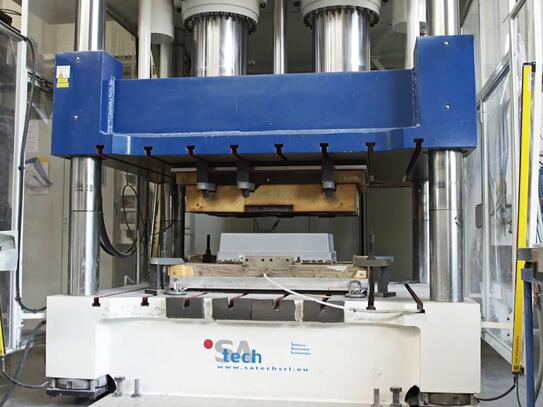
Vacuum casting
In vacuum casting, two molds are first coated with a layer of resin. After curing, several layers of glass fiber fabric and PU foam are placed between the two layers and saturated with resin. The part (side panel, door, roof or floor) is then completely cured in a vacuum, which ensures optimum and uniform distribution of the polyester resin.
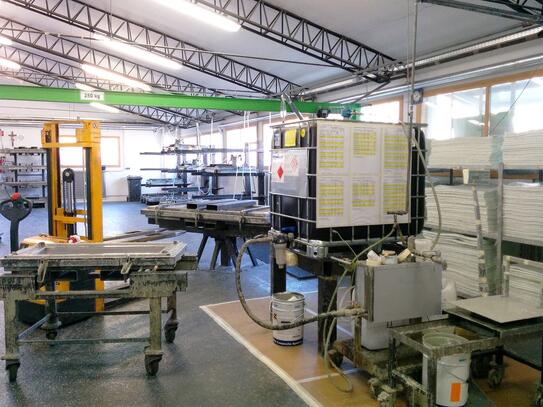
Sandwich construction
Here, depending on the application, GRP sheets are bonded and pressed with one or more insulating layers - for example, polyurethane foam for temperature-critical solutions or rock wool for fire protection. The area moment of inertia of this construction method also ensures high stability and rigidity.
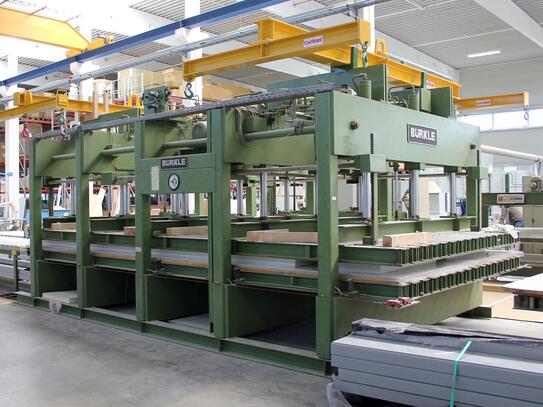
Strong, yet flexible and light
GRP has a similar strength to stainless steel but weighs about 75% less. This is particularly important in applications where the weight of corresponding structures plays a decisive role, such as on offshore platforms or urban roofs. In addition, transport and installation in remote locations is also made much easier. Thanks to the reinforced sandwich construction with an inner and outer skin enclosing a core of light, insulating PU foam, our enclosures offer excellent stability against storm, blast, seismic and other impact forces.
The performance of the base material is further enhanced by INTERTEC depending on the application. Increased wall thickness or double sandwich design and optimized fiber alignment allow the production of protective housings for measurement and analysis equipment with reinforcements at the edges/corners to withstand particularly heavy loads.
At the same time, our GRP composite material fulfils relevant frangibility guidelines: The enclosure can, if intended, be designed to yield or break on impact due to its low mass.
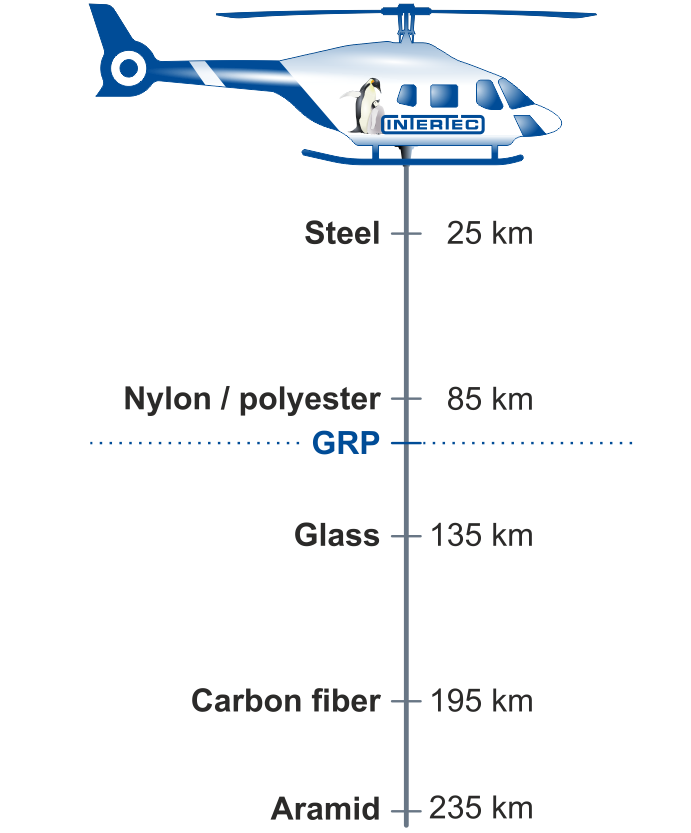
Specific strength of GRP in comparison
Resistance to heat and cold
Compared to metal, INTERTEC’s GRP composites offer 1000 times better heat resistance, making them capable of withstanding extreme temperatures. While the structural integrity of conventional materials suffers under very low or very high temperatures GRP can provide excellent stability even at -65°C and +80°C.
The low thermal conductivity of GRP and the additional insulation of the walls also reduce the energy requirement for heating or cooling systems. The resulting constant climatic conditions ensure that the integrated devices can function without any problems even under extreme weather conditions – and without any heat sinks.
Corrosion resistance
Unlike metal housings, INTERTEC’s GRP composite material does not degrade in any significant way, guaranteeing a maintenance-free life of over 30 years. Modern coatings also give the polyester panels excellent protection against UV radiation and abrasion in dusty or sandy environments.
Even under extreme corrosive conditions, where the housing is exposed to sulfur, chlorine, sea salt, common petrochemicals or air pollutants, the material offers outstanding resistance. Our material can, for example, withstand the highest corrosivity categories C5-I and C5-M according to DIN EN ISO 12944, as well as meet the requirements of Corrosion Resistance Class CRC V according to DIN EN 1993-1-4:2015-10/Eurocode 3, thus offering the best protection for sensitive plant technology and electronics in corrosive atmospheres.
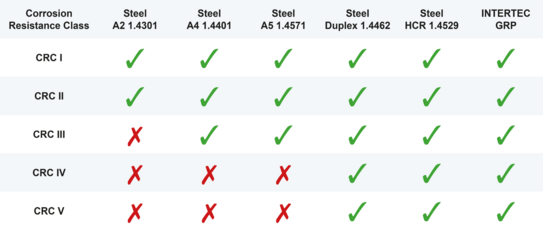
Our proven GRP composite material is fundamentally lighter and comparatively more cost-effective than the very high-quality steels for higher corrosion resistance classes (CRC IV, CRC V).
Fire and explosion protection
Special designs of our GRP enclosures offer antistatic protection, blast overpressure protection and fire resistance. By embedding mineral wool between GRP panels, the enclosures can resist fire for up to 120 minutes. Our product withstood even a fire test with the requirements of ANSI UL 1709 – with a rapidly rising temperature curve typical of hydrocarbon fires.
Electromagnetic transparency
The composite material is also electromagnetically transparent to radio waves, which are used, for example, in the mobile phone standards LTE or 5G.
A housing made of GRP is therefore very well suited for antennas and systems in communication technology.
Would you like to know more about GRP or talk about your application?
Our experts can provide you with the best solution individually tailored to your situation.


